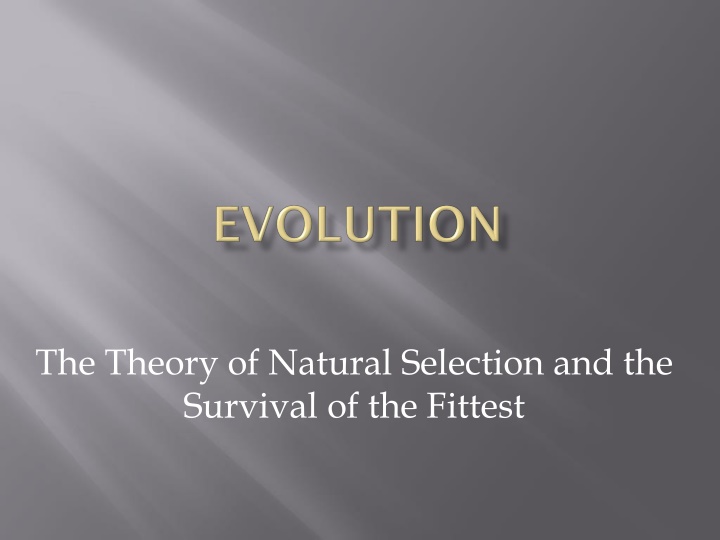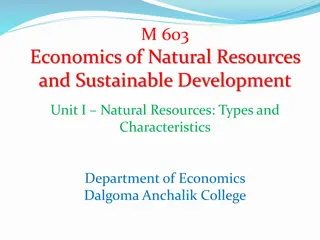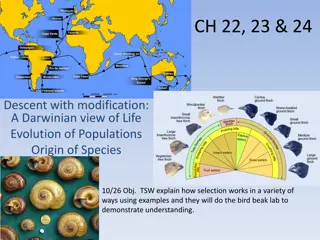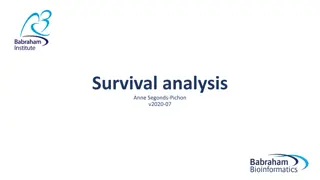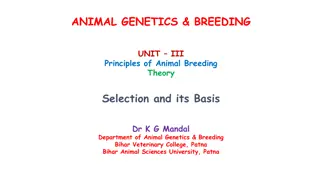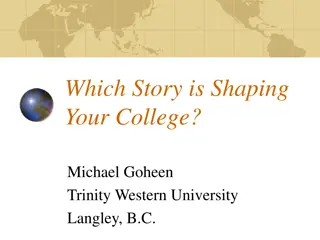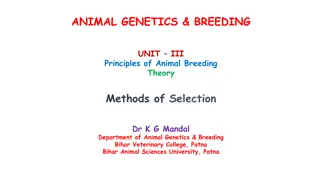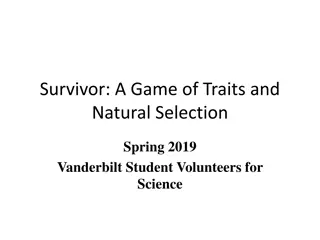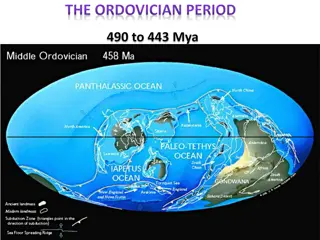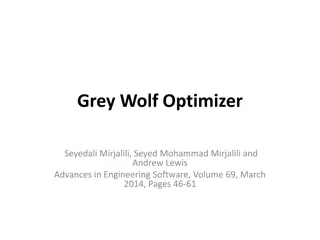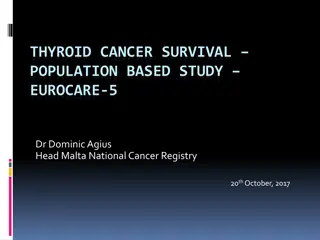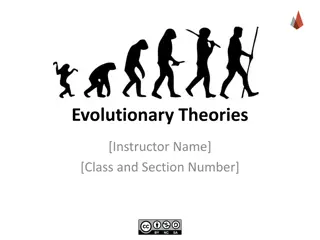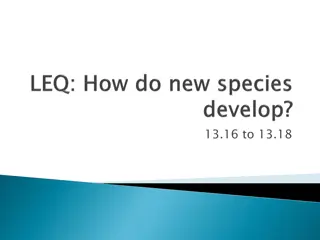Theory of Natural Selection & Survival of the Fittest Overview
Delve into the theory of evolution by natural selection, as proposed by Darwin and Wallace. Explore evidence from fossil records, and understand how species adapt over time through inherited variations and natural selection.
Download Presentation

Please find below an Image/Link to download the presentation.
The content on the website is provided AS IS for your information and personal use only. It may not be sold, licensed, or shared on other websites without obtaining consent from the author.If you encounter any issues during the download, it is possible that the publisher has removed the file from their server.
You are allowed to download the files provided on this website for personal or commercial use, subject to the condition that they are used lawfully. All files are the property of their respective owners.
The content on the website is provided AS IS for your information and personal use only. It may not be sold, licensed, or shared on other websites without obtaining consent from the author.
E N D
Presentation Transcript
The Theory of Natural Selection and the Survival of the Fittest
At the end of this lesson you should be able to 1. Define evolution 2. Outline the Darwin and Wallace Theory of natural selection 3. Discuss the evidence of evolution from either fossil, comparative anatomy or the study of embryos. (Fossil evidence was chosen for this unit)
Evolution is the changing of one species into another that takes place through natural selection It takes place over a long period of time
Darwin presented the theory of evolution by natural selection in 1858 Much of Darwin s work was done on the Galapagos islands Darwin proposed a mechanism for evolution by natural selection Alfred Wallace working in Borneo also proposed the same theory
Over breeding Population numbers remain constant Inherited variations occur in populations
There is a struggle for existence - competition will occur Natural Selection - only the fittest will survive
Too many offspring are produced This leads to competition All populations have genetic variations Individuals that are best adapted to the environment survive As the environment changes new adaptations emerge Over a long period of time a new species forms
Define Evolution 1. Who were the two people who proposed the 2. theory of evolution Where did Darwin carry out his work? 3. What were the observations and conclusions 4. made by Darwin? Outline the mechanism of evolution 5.
The fossil Record Palaeontology is the study of fossils. A fossil is the remains of an organism Fossils can be dated using radioactive carbon
Fossils show changes compared to modern organisms Some fossil organisms are extinct Modern fossils show increased complexity Fossil evidence can be linked to environmental change
65 million years ago dinosaurs became extinct Iridium an element found in meteorites was laid down This would suggest that a large meteorite hit earth creating large amounts of rock dust. This dust led to the earth becoming colder and darker causing plants and animals to become extinct.
The ancestor of the modern horse evolved 60 million years ago Horse Fossils were 0.4m tall 30 million years ago Horse fossils were 0.6m tall 15 million years ago Horse fossils were 1m tall 1 million years ago Equus the modern horse evolved Horse fossils were 1.6m tall
Miohippus Hyracotherium Neohipparion Equus
1. Outline the evidence for evolution 2. How do fossils provide evidence for evolution 3. Can you outline the evolution of the modern horse?
Can you 1. Define evolution 2. Outline the Darwin and Wallace Theory of natural selection 3. Discuss the evidence of evolution from the study of fossils
